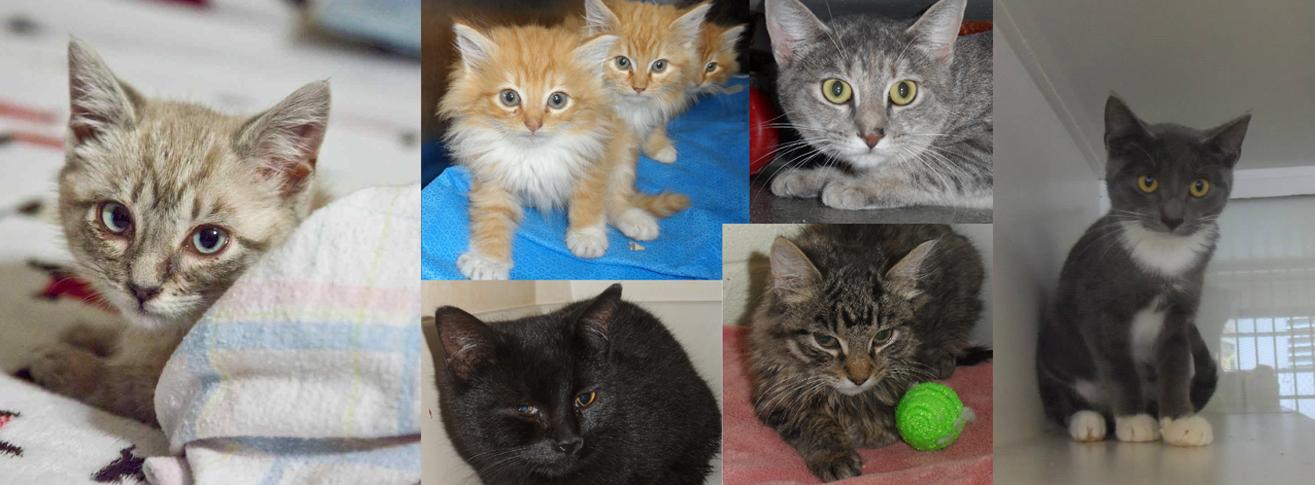FAQs About Feline Leukemia Virus (FeLV)
What is FeLV?
FeLV stands for feline leukemia virus. As the name implies, it is a viral infection of cats that affects a cat’s immune system and bone marrow.
How do cats get FeLV?
The virus is typically spread from cat to cat via close contact of infected and non-infected cats. It is normally spread via saliva, but it can also be spread by grooming, shared food bowls, bites and other forms of close contact. It is typically not spread in urine or feces. It can also be transmitted from a mother cat to a kitten in utero or during nursing. Less common, but possible causes of transmission of the virus include through fleas, blood transfusions or contaminated needles.
The virus does not live long outside of a cat host, so spreading FeLV via human clothing and hands is very unlikely. Thus, if a FeLV-positive cat is housed in a separate room from a FeLV-negative cat, it is not likely that transmission will occur (although it would still be wise not to share food bowls).
What are the signs of FeLV infection?
There are no specific signs of FeLV infection. In general, cats with FeLV have weaker immune systems so they are more prone to infections, such as upper respiratory infections, dental disease and mycoplasma hemofelis. Most cats with FeLV live normal lives, but their life span tends to be significantly shorter. Around 80 percent of FeLV kittens do not live past three years and most die within a year. The young cats tend to die from feline infectious peritonitis (FIP), lymphoma (a cancer affecting lymphatic tissue) or bone marrow disease. It is less likely for older cats to get a persistent infection, and when they do, they tend to handle the disease better.
How do I know if my cat has FeLV?
The only way to know if your cat is FeLV-positive is to have your veterinarian run a test called an ELISA. Cats can test positive within a few weeks after exposure, but almost all cats who are positive for the virus will be so by 28 days. However, testing positive just means that the virus is circulating in the cat’s blood; it does not mean that the cat will be permanently infected. It is possible for them to fight off the infection.
To find out if it is a persistent infection, an IFA test can be sent to a lab. If this test is positive, the cat is positive for FeLV and always will be. If it is negative, there is a chance the cat can fight off the infection (although recent research shows that the virus may just be dormant until a physiologic stressor allows it to circulate again). If the IFA is negative, both the ELISA and the IFA should be repeated in six weeks. Some cats remain discordant (ELISA positive, but IFA negative) for a very long time; it may be that they have a localized infection. We don’t recommend that these cats live with FeLV-negative cats, as they may be able to spread the virus to other cats. Cats who have fought off the virus are less likely to get re-infected, but it is possible.
Can FeLV be treated?
There is no specific treatment for FeLV, so most of the treatment of FeLV-positive cats involves supportive care. Because FeLV-positive cats have weaker immune systems, they do need to be treated for upper respiratory infections more often than FeLV-negative cats. Also, they tend to need dentals at a younger age than other cats.
What can be done to prevent the spread of FeLV?
Since there is no cure, prevention is the best treatment for FeLV. IF a FeLV-negative cat is not around a FeLV-positive cat, the FeLV-negative cat will not get the virus. It varies depending on where one lives, but roughly 2 to 8 percent of outdoor cats are FeLV-positive. So, keeping your cats indoors should prevent exposure. Also, all cats coming into the household should be tested before introducing them to your cats.
There is a vaccine for FeLV. If your cat does go outside, or if you bring cats into your house that you cannot test or isolate, your cat should be vaccinated, especially at a young age. The vaccine is not perfect, though; there has been an association of tumors developing at the site of FeLV vaccines. With improvement in vaccines, however, this is becoming much less common.
Can FeLV-negative and FeLV-positive cats live together?
A negative and positive cat could certainly live in the same house, as long as they do not have contact with each other.
Can FeLV-positive cats have a good life?
FeLV-positive cats can live perfectly happy lives, and they deserve to do so. People who have FeLV-positive cats just need to be aware that they may have a shorter life span and that they need to be taken to a veterinarian as soon as a problem is noted.

